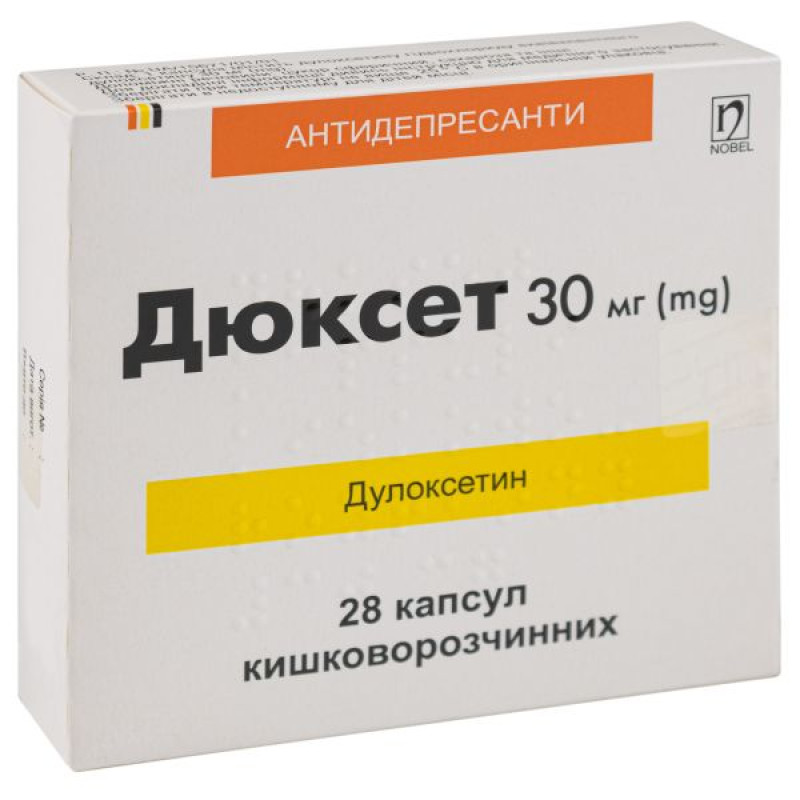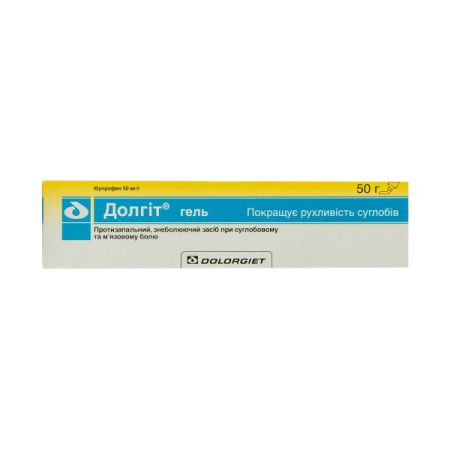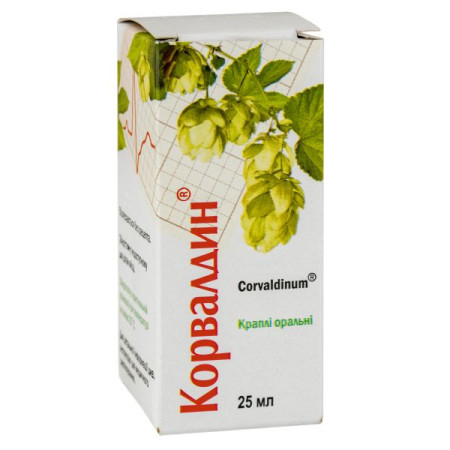Duxet enteric-coated capsules 30 mg blister No. 28

Instructions for Duxet enteric-coated capsules 30 mg blister No. 28
Composition
active ingredient: duloxetine;
1 capsule contains duloxetine hydrochloride equivalent to duloxetine 30 mg or 60 mg;
excipients: spherical sugar, hypromellose 603, sucrose, talc, triethyl citrate, hypromellose acetate succinate (AS-LF), ammonium hydroxide solution 25%, Opadry White 02A28361: hypromellose, titanium dioxide (E 171), talc;
composition of gelatin capsule No. 3 for 30 mg: titanium dioxide (E 171), indigo carmine (E 132), gelatin
composition of gelatin capsule No. 1 for 60 mg: titanium dioxide (E 171), indigo carmine (E 132), iron oxide yellow (E 172), gelatin.
Dosage form
Enteric-coated capsules.
Main physicochemical properties:
30 mg: hard gelatin capsules with an opaque white body and an opaque dark blue cap, containing white or almost white pellets;
60 mg: hard gelatin capsules with an opaque green body and an opaque dark blue cap, containing white or almost white pellets.
Pharmacotherapeutic group
Antidepressants. ATX code N06A X21.
Pharmacological properties
Pharmacodynamics.
Duloxetine is a serotonin and norepinephrine reuptake inhibitor. It has little dopamine reuptake inhibition and has low affinity for histamine, dopamine, cholinergic, and adrenergic receptors. The mechanism of action of duloxetine in the treatment of depression is due to inhibition of serotonin and norepinephrine reuptake and, as a result, increased serotonergic and noradrenergic neurotransmission in the central nervous system. Duloxetine also has analgesic effects, which are likely to be the result of slowing the transmission of pain impulses in the central nervous system.
Pharmacokinetics.
Duloxetine is well absorbed after oral administration. Peak concentrations are reached 6 hours after administration. Food intake delays absorption, increasing the time to peak concentration from 6 to 10 hours and decreasing absorption (by approximately 11%).
Distribution: Duloxetine is highly bound to serum proteins (>90%).
Metabolism: Duloxetine is metabolized by CYP2D6 and CYP1A2 isoenzymes. The metabolites formed are pharmacologically inactive.
Elimination: The elimination half-life of duloxetine is 12 hours. The mean plasma clearance of duloxetine is 101 L/h.
Renal impairment: In patients with end-stage renal disease undergoing dialysis, duloxetine exposure and AUC were increased two-fold compared to healthy volunteers. Therefore, a lower starting dose should be considered in patients with chronic renal failure.
Indication
Treatment of major depressive disorder.
Treatment of diabetic peripheral neuropathic pain.
Treatment of generalized anxiety disorder.
Contraindication
– Hypersensitivity to duloxetine or to any of the excipients of the drug.
– Concomitant use with non-selective, irreversible monoamine oxidase inhibitors (MAOIs) or for at least 14 days after discontinuation of MAOI treatment. Given the half-life of duloxetine, MAOIs should not be administered for at least 5 days after discontinuation of duloxetine treatment.
– Concomitant use with fluvoxamine, ciprofloxacin or enoxacin (strong CYP1A2 inhibitors) due to increased plasma concentrations of duloxetine.
– Unstable arterial hypertension, which can provoke a hypertensive crisis.
– End-stage renal failure (creatinine clearance < 30 ml/min).
– Liver disease that can cause liver failure.
– Childhood.
Interaction with other medicinal products and other types of interactions
Drugs metabolized by CYP1A2: In a clinical study, co-administration of theophylline, a CYP1A2 substrate, with duloxetine (60 mg twice daily) did not have a significant effect on the pharmacokinetics of these drugs.
CYP1A2 inhibitors. Since CYP1A2 is involved in the metabolism of duloxetine, concomitant use of duloxetine with potent CYP1A2 inhibitors is likely to result in increased duloxetine concentrations. Fluvoxamine (100 mg once daily), a potent CYP1A2 inhibitor, reduces duloxetine plasma clearance by approximately 77%. Therefore, Duloxet should not be administered concomitantly with CYP1A2 inhibitors.
Central nervous system depressants: Certain precautions should be observed when duloxetine is taken in combination with other central nervous system depressants, especially those with a similar mechanism of action, including alcohol and sedative medicines.
MAO inhibitors: Duloxetine should not be administered with non-selective, irreversible monoamine oxidase (MAO) inhibitors due to the risk of serotonin syndrome. Reversible, selective monoamine oxidase (MAO) inhibitors, such as moclobemide, have a lower risk of serotonin syndrome, but this combination is not recommended.
Serotonin syndrome. Duxet should be prescribed with caution in combination with serotonergic and tricyclic antidepressants, St. John's wort preparations, tramadol, peptidine, tryptophan.
Anticoagulants and antithrombotic agents: Duloxetine should be administered with caution with oral anticoagulants and antithrombotic agents due to the potential for increased bleeding risk due to pharmacodynamic interactions.
Medicines containing duloxetine.
Concomitant use with other medicinal products containing duloxetine should be avoided.
Preparations containing St. John's wort herb.
When used together with Duxet, adverse reactions often occur.
Application features
Warning
Patients at high risk of suicide should be closely monitored during treatment, as the possibility of a suicide attempt cannot be ruled out until significant remission occurs.
Seizures and mania: As with other drugs that act on the central nervous system, duloxetine should be used with caution in patients with a history of seizures, mania, or bipolar disorder.
Mydriasis: Mydriasis has been reported in association with duloxetine, therefore duloxetine should be used with caution in patients with elevated intraocular pressure or at risk of acute narrow-angle glaucoma.
Blood pressure and palpitations. In some patients, duloxetine has been associated with an increase in blood pressure. Monitoring of blood pressure is recommended in patients with known hypertension and/or other cardiac disease. Patients with persistently elevated blood pressure should have their dose reduced or the drug gradually discontinued. Treatment of patients with unstable hypertension is not advisable.
Haemorrhage: Several cases of haemorrhage have been reported, including purpura, gastrointestinal bleeding and haemorrhage.
Hyponatremia. Caution should be exercised in patients at increased risk of hyponatremia, including the elderly, patients with syndrome of inappropriate antidiuretic hormone (SINADH), and patients with cirrhosis.
Withdrawal syndrome: Withdrawal symptoms are quite common, especially when treatment is stopped abruptly. Treatment should be discontinued over a period of at least 2 weeks by gradually reducing the dose.
Akathisia/psychomotor restlessness: These symptoms occur within the first few weeks of treatment.
Elevated liver enzymes. Severe elevations of liver enzymes (>10 times the upper limit of normal) or liver injury with cholestasis or severe elevations of enzymes together with liver injury have occurred rarely. These events have been reported most frequently during the first months of treatment. Liver injury is most often hepatocellular in nature. Caution should be exercised when prescribing duloxetine to patients taking medications that can cause liver injury.
Presence of sucrose. Duxet enteric-coated capsules should not be prescribed to patients with hereditary fructose intolerance, malabsorption syndrome, or sucrase-isomaltase insufficiency.
Suicide.
Major depressive disorder and generalized anxiety disorder.
Depression is associated with an increased risk of suicidal thoughts, self-harm and suicide (suicide-related events). The risk persists until significant remission is achieved. The patient should be closely monitored until significant improvement is achieved, as remission may not occur during the first few weeks or more of treatment. It is general clinical experience that the risk of suicide is increased in the initial stages of treatment.
Psychiatric conditions for which Duloxetin is prescribed may also be associated with an increased risk of suicidal behaviour. In addition, these psychiatric conditions may be comorbid if they accompany major depressive disorder. Therefore, the same precautions should be observed when treating patients with major depressive disorder as in other psychiatric conditions. Patients with a history of suicidal behaviour or a significant level of suicidal ideation are at greater risk of suicidal behaviour and should be monitored closely during treatment. Suicidal ideation and behaviour have been reported during duloxetine therapy or early after discontinuation. Close monitoring of patients, particularly those at risk, is necessary during therapy, especially in the early stages, and appropriate dose adjustments should be made.
Isolated cases of suicidal ideation and suicidal behaviour have been reported during or early after treatment with duloxetine, as with other medicinal products with similar pharmacological effects (antidepressants). Physicians should advise patients to report any feelings of distress.
Elderly patients.
Data on the use of Duakset 120 mg in elderly patients with major depressive disorder and generalized anxiety disorder are limited.
Serious skin reactions.
Very rarely, skin reactions such as angioedema, hemorrhages, Stevens-Johnson syndrome, bruising, urticaria have been reported.
Use during pregnancy or breastfeeding
There are no adequate and well-controlled studies in pregnant women, and therefore the use of the drug during pregnancy is not recommended. As with other serotonergic drugs, withdrawal symptoms may occur in infants exposed to duloxetine before delivery. Withdrawal symptoms include orthostatic hypotension, tremor, hyperexcitability, difficulty swallowing, sucking, respiratory distress, and seizures. In most cases, these symptoms have occurred immediately after birth or within the first few days of life. Women should be advised to inform their doctor if they become pregnant or plan to become pregnant while taking duloxetine.
The use of the drug during pregnancy is recommended only if the expected benefit to the pregnant woman outweighs the potential risk to the fetus.
Breastfeeding while taking duloxetine is not recommended.
Ability to influence reaction speed when driving vehicles or other mechanisms
During treatment, patients should refrain from potentially hazardous activities that require increased attention and speed of psychomotor reactions.
Method of administration and doses
Major depressive disorder. Duxeltes is prescribed at a dose of 60 mg once daily, regardless of meals.
For some patients, doses higher than 60 mg may be recommended, up to a maximum of 120 mg per day, given in 2 divided doses. The feasibility of prescribing doses higher than 120 mg has not been systematically evaluated.
Diabetic peripheral neuropathic pain. The recommended starting dose is 60 mg once daily without regard to meals. In some patients, doses exceeding 60 mg once daily may be recommended, up to a maximum dose of 120 mg daily, given in 2 divided doses.
The therapeutic effect of treatment is evident within 2 months.
Generalized anxiety disorder. The recommended starting dose is 30 mg once daily without regard to meals. In patients with insufficient response to treatment, the dose should be increased to 60 mg daily. In the event of insufficient response to treatment with 60 mg, an increase in dose to 90 or 120 mg daily may be considered.
The therapeutic effect of treatment is evident within 2-4 weeks.
Patients with renal impairment. No dose adjustment is required for patients with mild to moderate renal impairment. Duxeltes is contraindicated in patients with end-stage renal disease (creatinine clearance < 30 mL/min).
Patients with hepatic impairment: Duxet should not be administered to patients with liver disease.
Elderly patients. No dose adjustments are required for elderly patients.
Children
The safety and efficacy of duloxetine in children have not been studied, so the drug is contraindicated in this age group of patients.
Overdose
Data on overdose with duloxetine are limited. There have been reports of non-fatal overdoses of large doses (up to 1400 mg) of duloxetine alone or in combination with other drugs. Symptoms of overdose (predominantly in combination with other drugs) have included somnolence, coma, serotonin syndrome, seizures, vomiting, and tachycardia.
Treatment. Specific antidotes are not known. If serotonin syndrome occurs, specific treatment is required (use of cyproheptadine and/or temperature control). Airway patency should be checked. Cardiac monitoring and vital signs monitoring are recommended, along with appropriate symptomatic and supportive measures. Gastric lavage may be appropriate if performed immediately after ingestion. Activated charcoal reduces the absorption of the drug. Duloxetine has a large volume of distribution, so forced diuresis, hemoperfusion, and exchange perfusion are unlikely to be useful.
Adverse reactions
Dizziness, nausea and headache have been reported as adverse reactions on discontinuation of duloxetine. Sensory disturbances, sleep disturbances, agitation or anxiety, tremor, irritability, diarrhoea and hyperhidrosis have also been reported on discontinuation of duloxetine.
Infections and infestations: laryngitis.
From the endocrine system: hypothyroidism.
Metabolic: decreased appetite, hyperglycemia, dehydration, hyponatremia, syndrome of inappropriate antidiuretic hormone secretion6.
Psychiatric: insomnia, agitation, decreased libido, anxiety, abnormal visions and abnormal orgasm, sleep disorders, bruxism, disorientation, apathy, suicidal ideation5,7, mania, hallucinations, aggression and malice4, suicidal behavior5,7.
Nervous system disorders: headache, drowsiness, dizziness, tremor, paresthesia, myoclonus, akathisia7, nervousness, disturbance in attention, lethargy, dyskinesia, taste disturbance, restless legs syndrome, poor sleep, serotonin syndrome6, convulsions1, psychomotor agitation6, extrapyramidal disorders6.
From the organs of vision: blurred vision, mydriasis, visual disturbances, dry eyes, glaucoma.
From the side of the organs of hearing: tinnitus1, vertigo, earache.
Cardiovascular system: palpitations; tachycardia; hot flashes; supraventricular arrhythmia; fibrillation, most often atrial; arterial hypertension3,7; increased blood pressure3; orthostatic hypotension2; loss of consciousness2; feeling of coldness in the extremities; hypertensive crisis3,6.
Respiratory system: yawning, oropharyngeal pain, feeling of tightness in the throat, nosebleed.
Gastrointestinal: nausea, vomiting, dyspepsia, flatulence, abdominal pain, constipation, diarrhea, gastrointestinal bleeding7, gastroenteritis, belching, gastritis, stomatitis, bad breath, blood in stools, dry mouth.
Hepatobiliary system: increased liver enzymes (ALT, AST, alkaline phosphatase), hepatitis3, acute liver injury, jaundice6, liver failure6.
Skin: increased sweating, rash, night sweats, contact dermatitis, urticaria, cold sweat, photosensitivity, increased tendency to bruise, angioedema6, Stevens-Johnson syndrome6.
Musculoskeletal system: musculoskeletal pain, muscle spasm, muscle twitching, feeling of muscle stiffness, trismus.
From the urinary system: dysuria, urinary retention, difficulty in starting urination, nocturia, polyuria, decreased urine flow, abnormal urine odor.
From the reproductive system: erectile dysfunction, impaired or delayed ejaculation, menstrual disorders, sexual disorders, gynecological bleeding, menopausal symptoms, galactorrhea, hyperprolactinemia.
General disorders: fatigue, chest pain7, fall8, malaise, feeling cold, crawling sensation, thirst, malaise, feeling hot, gait disturbance.
Laboratory tests: weight loss, weight gain, increased creatinine phosphokinase levels, increased blood cholesterol levels.
1 Cases of seizures and tinnitus have been observed after discontinuation of treatment.
2 Cases of orthostatic hypotension and loss of consciousness were observed mainly at the beginning of treatment.
3 Patients who experience persistent elevations in blood pressure while taking duloxetine should have their dose reduced or therapy gradually discontinued.
4 Cases of aggression and hostility have been reported at the start of treatment and after treatment discontinuation.
5 Cases of suicidal ideation and suicidal behaviour have been reported early in treatment and early after treatment discontinuation.
6 Frequency of adverse reactions identified from post-marketing studies.
7 Statistically not significantly different from placebo.
8 Falls were more common in elderly patients (≥ 65 years).
Discontinuation of therapy (especially abrupt discontinuation) is often accompanied by a withdrawal syndrome. The most common adverse reactions in this case are: dizziness, drowsiness, sensory disturbances (including paresthesia), sleep disturbances (including insomnia and severe delusions), weakness, anxiety or aggression, nausea and/or vomiting, tremor, headache, irritability, diarrhea, hyperhidrosis and dizziness. Gradual discontinuation of therapy is recommended.
Kidney failure.
In patients with severe renal impairment (creatinine clearance < 30 mL/min) undergoing hemodialysis, increased plasma levels of duloxetine have been observed. Use is contraindicated.
Hepatitis/increased liver enzymes.
Cases of liver injury have been reported, including marked elevations of liver enzymes (up to 10 times the upper limit of normal), hepatitis and jaundice. Most of these events occurred within the first month of treatment. The most common type of liver injury is hepatocellular. Duloxetine should be used with caution in patients taking medicinal products that may cause liver injury.
Minor increases in blood potassium levels have been reported. Transient abnormal potassium levels were uncommon in patients treated with duloxetine compared to placebo.
Expiration date
2 years.
Storage conditions
Store at a temperature not exceeding 25 °C in the original packaging.
Keep out of reach of children.
Packaging
14 capsules in a blister; 2 blisters in a cardboard box.
Vacation category
According to the recipe.
Producer
NOBEL ILACH SANAI VE TJARET A.Sh.
Sancaklar, Koyu 81100 m. Duzce, Turkey.
There are no reviews for this product.
There are no reviews for this product, be the first to leave your review.
No questions about this product, be the first and ask your question.














